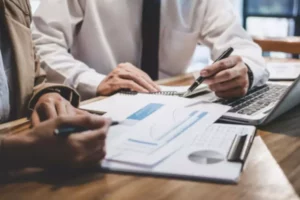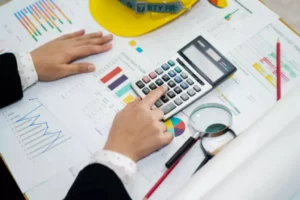Are Coding Bootcamps Worth It in 2023?
28 de setembro de 2020Fed’s balance sheet
30 de outubro de 2020Content

After enrolling in a program, you may request a withdrawal with refund (minus a $100 nonrefundable enrollment fee) up until 24 hours after the start of your program. Please review the Program Policies page for more details on refunds and deferrals. Harvard Business School Online’s Business Insights Blog provides the career insights you need to achieve your goals and gain confidence in your business skills. Katrina Ávila Munichiello is an experienced editor, writer, fact-checker, and proofreader with more than fourteen years of experience working with print and online publications.
This is important because a company needs to have enough cash on hand to pay its expenses and purchase assets. While an income statement can tell you whether a company made a profit, a cash flow statement can tell you whether the company generated cash. Assets are generally listed based on how quickly they will be converted into cash. Current assets are things a company expects to convert to cash within one year. Most companies expect to sell their inventory for cash within one year.
Step 2: List all of your assets
This account includes the total amount of long-term debt (excluding the current portion, if that account is present under current liabilities). This account is derived from the debt schedule, which outlines all of the company’s outstanding debt, the interest expense, and the principal repayment for every period. Balance sheets, like all financial statements, will have minor differences between organizations and industries. However, there are several “buckets” and line items that are almost always included in common balance sheets.
- The following balance sheet is a very brief example prepared in accordance with IFRS.
- While an income statement can tell you whether a company made a profit, a cash flow statement can tell you whether the company generated cash.
- If a company buys a piece of machinery, the cash flow statement would reflect this activity as a cash outflow from investing activities because it used cash.
- It also has pre-set items for current assets, fixed assets, current liabilities, and long-term liabilities so, you won’t have to add them in yourself.
Although accountants generally do not increase the value of an asset, they might decrease its value as a result of a concept known as conservatism. For example, after a few months in business, Joe may decide that he can help out some customers—as well as earn additional revenues—by carrying an inventory of packing boxes to sell. Let’s say that Direct Delivery purchased 100 boxes wholesale for $1.00 each.
Making balance sheets work for you
Some candidates may qualify for scholarships or financial aid, which will be credited against the Program Fee once eligibility is determined. Please refer to the https://www.bookstime.com/ Payment & Financial Aid page for further information. Some liabilities are considered off the balance sheet, meaning they do not appear on the balance sheet.
- The most liquid of all assets, cash, appears on the first line of the balance sheet.
- Katrina Ávila Munichiello is an experienced editor, writer, fact-checker, and proofreader with more than fourteen years of experience working with print and online publications.
- Most companies expect to sell their inventory for cash within one year.
- In the end, Samy convinces Abdullah that he just learned useful information about how to read a balance sheet, which can help him a lot in running his business.
- Each side of the equation must match the other—one account must be debited and another credited.
Balance sheets for public companies in the U.S. must adhere to generally accepted accounting principles (GAAP). Private companies aren’t required to follow GAAP standards, but some do for the sake of consistency, especially if there are plans to go public in the future. If these two sides don’t balance, there has been a mistake in the company’s accounting, or transactions are not properly recorded. The above means that the carrying amount of the delivery van will be SAR 16,000 on the balance sheet after year one, SAR 12,000 after year two, and so on. After five years, the expected end of the van’s useful life, it will no longer carry any accounting value.
Step-by-step: How to make a balance sheet
You can start by listing your assets, including your cash, investments, accounts receivable (money you’re owed), any inventory you own, property you have, etc. You can find some excellent balance sheet templates online that can help to keep you organized. Subtract the liabilities on your balance sheet from the assets to find the equity you have in your business or your personal net worth. Marilyn moves on to explain the balance sheet, a financial statement that reports the amount of a company’s (A) assets, (B) liabilities, and (C) stockholders’ (or owner’s) equity at a specific point in time. Because the balance sheet reflects a specific point in time rather than a period of time, Marilyn likes to refer to the balance sheet as a “snapshot” of a company’s financial position at a given moment. For example, if a balance sheet is dated December 31, the amounts shown on the balance sheet are the balances in the accounts after all transactions pertaining to December 31 have been recorded.
You can also compare your latest balance sheet to previous ones to examine how your finances have changed over time. Below are balance sheet templates that you can use with Microsoft Excel to create one for your business. Organize your assets into two categories — current and fixed — and represent each asset as a line item within the appropriate category.
They are either long-term liabilities (also called non-current liabilities) or current liabilities. Marilyn brings up another less obvious asset—the unexpired portion of prepaid expenses. Suppose Direct Delivery pays $1,200 on December 1 for a six-month insurance premium on its delivery vehicle.
- Fixed assets are tangible resources that are relatively permanent in nature, used in the business, and not intended to be sold.
- The above means that the carrying amount of the delivery van will be SAR 16,000 on the balance sheet after year one, SAR 12,000 after year two, and so on.
- A balance sheet is important for several reasons, but mainly because it shows the financial health of a company.
- Product-based companies, such as retailers, sell goods to consumers and have overhead expenses like inventory and real estate.
- SVA’s Biz Tips are quick reads on timely information sent to you as soon as they are published.
- Property, Plant, and Equipment (also known as PP&E) capture the company’s tangible fixed assets.
- The balance sheet is a very important financial statement for many reasons.
The following balance sheet is a very brief example prepared in accordance with IFRS. It does not show all possible kinds of assets, liabilities and equity, but it shows the most usual ones. Monetary values balance sheet basics are not shown, summary (subtotal) rows are missing as well. Another asset, Office Equipment, may have a fair market value that is much smaller than the carrying amount reported on the balance sheet.
While all balance sheets follow the same equation, the types of accounts listed will vary based on the type of business. Product-based companies, such as retailers, sell goods to consumers and have overhead expenses like inventory and real estate. Service-based companies, like dry cleaners or law firms, sell services instead of goods, so they do not typically have inventory or raw products on the balance sheet. The method and time period in which payment is accepted may also change what’s listed in the balance sheet. In other words, it is the amount that can be handed over to shareholders after the debts have been paid and the assets have been liquidated.
A balance sheet is a financial statement that shows a company’s assets, liabilities, and shareholder’s equity, or how much shareholders have invested. While an asset is something a company owns, a liability is something it owes. Liabilities are financial and legal obligations to pay an amount of money to a debtor, which is why they’re typically tallied as negatives (-) in a balance sheet. A balance sheet represents a company’s financial position for one day at its fiscal year end, for example, the last day of its accounting period, which can differ from our more familiar calendar year. Companies typically select an ending period that corresponds to a time when their business activities have reached the lowest point in their annual cycle, which is referred to as their natural business year. Generally, sales growth, whether rapid or slow, dictates a larger asset base—higher levels of inventory, receivables, and fixed assets (plant, property, and equipment).
Shareholder Equity
Let’s say that Wasslak’s van has a five-year useful life and costs SAR 20,000. The accountant could match SAR 4,000 of Depreciation Expense (SAR 20,000 divided by five years) with each year’s income for five years. This way, the van will be able to carry SAR 4,000 less value every year.

Check out Ramp’s capabilities today, and enhance your company’s finances. The company’s total overall liabilities are listed at the end of the liabilities section. Samy nods and shows Abdullah how to report these things in accounts named Vehicles, Cash, Supplies, and Equipment. Next, he talks about Accounts Receivable, which Abdullah hadn’t thought of as an asset, yet it is.
What Is Included in the Balance Sheet?
When a balance sheet is reviewed externally by someone interested in a company, it’s designed to give insight into what resources are available to a business and how they were financed. Based on this information, potential investors can decide whether it would be wise to invest in a company. Similarly, it’s possible to leverage the information in a balance sheet to calculate important metrics, such as liquidity, profitability, and debt-to-equity ratio. When investors ask for a balance sheet, they want to make sure it’s accurate to the current time period. It’s important to keep accurate balance sheets regularly for this reason. Below, we’ll delve into the purpose of creating balance sheets (also known as net worth statements) and then provide a step-by-step guide of how to make your own.
- Balance sheets provide the basis for computing rates of return for investors and evaluating a company’s capital structure.
- By putting these steps into practice, it will help you avoid accounting errors, identify new cash flow opportunities and promote financial success within your company.
- As previously noted, think of this as the amount of money that would theoretically be left if Apple decided to cease business operations, sell everything it owns, and pay off its debts.
- You can first list your current assets (cash, marketable securities or inventory), ordering the ones your company can quickly turn into cash before the others.
- Liabilities are what a company owes to others—creditors, suppliers, tax authorities, employees, etc.
- Volatility profiles based on trailing-three-year calculations of the standard deviation of service investment returns.
- In financial reporting, the terms “current” and “non-current” are synonymous with the terms “short-term” and “long-term,” respectively, and are used interchangeably.
